Hahn Th. (ed.) International tables for crystallography. Vol. A. Space-group symmetry
Подождите немного. Документ загружается.


(b) the two trigonal prisms f1010g and f1010g; similarly for two
dimensions;
(c) the two trigonal prisms f11
20g and f1120g; similarly for two
dimensions;
(d) the positive and negative tetrahedra f111g and f
111g.
In the point-group tables, both representatives of these forms are
listed, separated by ‘or’, for instance ‘(001) or 00
1’.
(ii) In crystallography, the terms tetragonal, trigonal, hexagonal,
as well as tetragon, trigon and hexagon, imply that the cross sections
of the corresponding polyhedra, or the polygons, are regular
tetragons (squares), trigons or hexagons. Similarly, ditetragonal,
ditrigonal, dihexagonal, as well as ditetragon, ditrigon and
dihexagon, refer to semi-regular cross sections or polygons.
(iii) Crystal forms can be ‘open’ or ‘closed’. A crystal form is
‘closed’ if its faces form a closed polyhedron; the minimum number
of faces for a closed form is 4. Closed forms are disphenoids,
dipyramids, rhombohedra, trapezohedra, scalenohedra and all cubic
forms; open forms are pedions, pinacoids, sphenoids (domes),
pyramids and prisms.
A point form is always closed. It should be noted, however, that a
point form dual to a closed face form is a three -dimensional
polyhedron, whereas the dual of an open face form is a two-orone-
dimensional polygon, which, in general, is located ‘off the origin’
but may be centred at the origin (here called ‘through the origin’).
(iv) Crystal forms are well known; they are described and
illustrated in many textbooks. Crystal forms are ‘isohedral’
polyhedra that have all faces equivalent but may have more than
one kind of vertex; they include regular polyhedra. The in-sphere of
the polyhedron touches all the faces.
Crystallographic point forms are less known; they are described
in a few places only, notably by A. Niggli (1963), by Fischer et al.
(1973), and by Burzlaff & Zimmermann (1977). The latter
publication contains drawings of the polyhedra of all point forms.
Point forms are ‘isogonal’ polyhedra (polygons) that have all
vertices equivalent but may have more than one kind of face;*
again, they include regular polyhedra. The circumsphere of the
polyhedron passes through all the vertices.
In most cases, the names of the point-form polyhedra can easily
be derived from the corresponding crystal forms: the duals of
n-gonal pyramids are regular n-gons off the origin, those of n-gonal
prisms are regular n-gons through the origin. The duals of
di-n-gonal pyramids and prisms are truncated (regular) n-gons,
whereas the duals of n -gonal dipyramids are n-gonal prisms.
In a few cases, however, the relations are not so evident. This
applies mainly to some cubic point forms [see item (v) below]. A
further example is the rhombohedron, whose dual is a trigonal
antiprism (in general, the duals of n-gonal streptohedra are n-gonal
antiprisms).† The duals of n-gonal trapezohedra are polyhedra
intermediate between n-gonal prisms and n-gonal antiprisms; they
are called here ‘twisted n-gonal antiprisms’. Finally, the duals of di-
n-gonal scalenohedra are n-gonal antiprisms ‘sliced off’ perpendi-
cular to the prism axis by the pinacoid f001g.‡
(v) Some cubic point forms have to be described by
‘combinations’ of ‘isohedral’ polyhedra because no common
names exist for ‘isogonal’ polyhedra. The maximal number of
polyhedra required is three. The shape of the combination that
describes the point form depends on the relative sizes of the
polyhedra involved, i.e. on the relative values of their central
distances. Moreover, in some cases even the topology of the point
form may change.
Example
‘Cube truncated by octahedron’ and ‘octahedron truncated by
cube’. Both forms have 24 vertices, 14 faces and 36 edges but the
faces of the first combination are octagons and trigons, those of
the second are hexagons and tetragons. These combinations
represent different special point forms x, x, z and 0, y, z. One form
can change into the other only via the (semi-regular) cuboctahe-
dron 0, y, y, which has 12 vertices, 14 faces and 24 edges.
The unambiguous description of the cubic point forms by
combinations of ‘isohedral’ polyhedra requires restrictions on the
relative sizes of the polyhedra of a combination. The permissible
range of the size ratios is limited on the one hand by vanishing, on
the other hand by splitting of vertices of the combination. Three
cases have to be distinguished:
(a) The relative sizes of the polyhedra of the combination can
vary independently. This occurs whenever three edges meet in one
vertex. In Table 10.1.2.2, the names of these point forms contain the
term ‘truncated’.
Examples
(1) ‘Octahedron truncated by cube’ (24 vertices, dual to
tetrahexahedron).
(2) ‘Cube truncated by two tetrahedra’ (24 vertices, dual to
hexatetrahedron), implying independent variation of the
relative sizes of the two truncating tetrahedra.
(b) The relative sizes of the polyhedra are interdependent. This
occurs for combinations of three polyhedra whenever four edges
meet in one vertex. The names of these point forms contain the
symbol ‘&’.
Example
‘Cube & two tetrahedra’ (12 vertices, dual to tetragon-tritetrahe-
dron); here the interdependence results from the requirement that
in the combination a cube edge is reduced to a vertex in which
faces of the two tetrahedra meet. The location of this vertex on the
cube edge is free. A higher symmetrical ‘limiting’ case of this
combination is the ‘cuboctahedron’, where the two tetrahedra
have the same sizes and thus form an octahedron.
(c) The relative sizes of the polyhedra are fixed. This occurs for
combinations of three polyhedra if five edges meet in one vertex.
These point forms are designated by special names (snub
tetrahedron, snub cube, irregular icosahedron), or their names
contain the symbol ‘+’.
The cuboctahedron appears here too, as a limiting form of the
snub tetrahedron (dual to pentagon-tritetrahedron) and of the
irregular icosahedron (dual to pentagon-dodecahedron) for the
special coordinates 0, y , y.
(vi) Limiting crystal forms result from general or special crystal
forms for special values of certain geometrical parameters of the
form.
Examples
(1) A pyramid degenerates into a prism if its apex angle becomes 0,
i.e. if the apex moves towards infinity.
(continued on page 795)
*
Thus, the name ‘prism’ for a point form implies combination of the prism with a
pinacoid.
{
A tetragonal tetrahedron is a digonal streptohedron; hence, its dual is a ‘digonal
antiprism’, which is again a tetragonal tetrahedron.
{
The dual of a tetragonal di-digonal scalenohedron is a ‘digonal antiprism’,
which is ‘cut off’ by the pinacoid f001g.
767
10.1. CRYSTALLOGRAPHIC AND NONCRYSTALLOGRAPHIC POINT GROUPS

Table 10.1.2.1. The ten two-dimensional crystallographic point groups
General, special and limiting edge forms and point forms (italics), oriented edge and site symmetries, and Miller indices (hk) of equivalent edges [for hexagonal
groups Bravais–Miller indices (hki) are used if referred to hexagonal axes]; for point coordinates see text.
OBLIQUE SYSTEM
1
1 a 1 Single edge
(hk)
Single point (a)
2
2 a 1 Pair of parallel edges
hk
h
k
Line segment through origin (e)
RECTANGULAR SYSTEM
m
2 b 1 Pair of edges
hk
hk
Line segment (c)
Pair of parallel edges
10
10
Line segment through origin
1 a.m.Single edge (01) or 0
1
Single point (a)
2mm
4 c 1 Rhomb
hk
h
k
hkh
k
Rectangle (i)
2 b.m.Pair of parallel edges
010
1
Line segment through origin (g)
2 a ..m Pair of parallel edges
10
10
Line segment through origin (e)
SQUARE SYSTEM
4
4 a 1 Square
hk
h
k
khk
h
Square (d)
4mm
8 c 1 Ditetragon
hk
h
k
khk
h
Truncated square (g )
hkh
kkh
k
h
4 b ..m Square
11
1
1
111
1
Square ( f )
4 a.m.Square
10
10010
1
Square (d)
768
10. POINT GROUPS AND CRYSTAL CLASSES
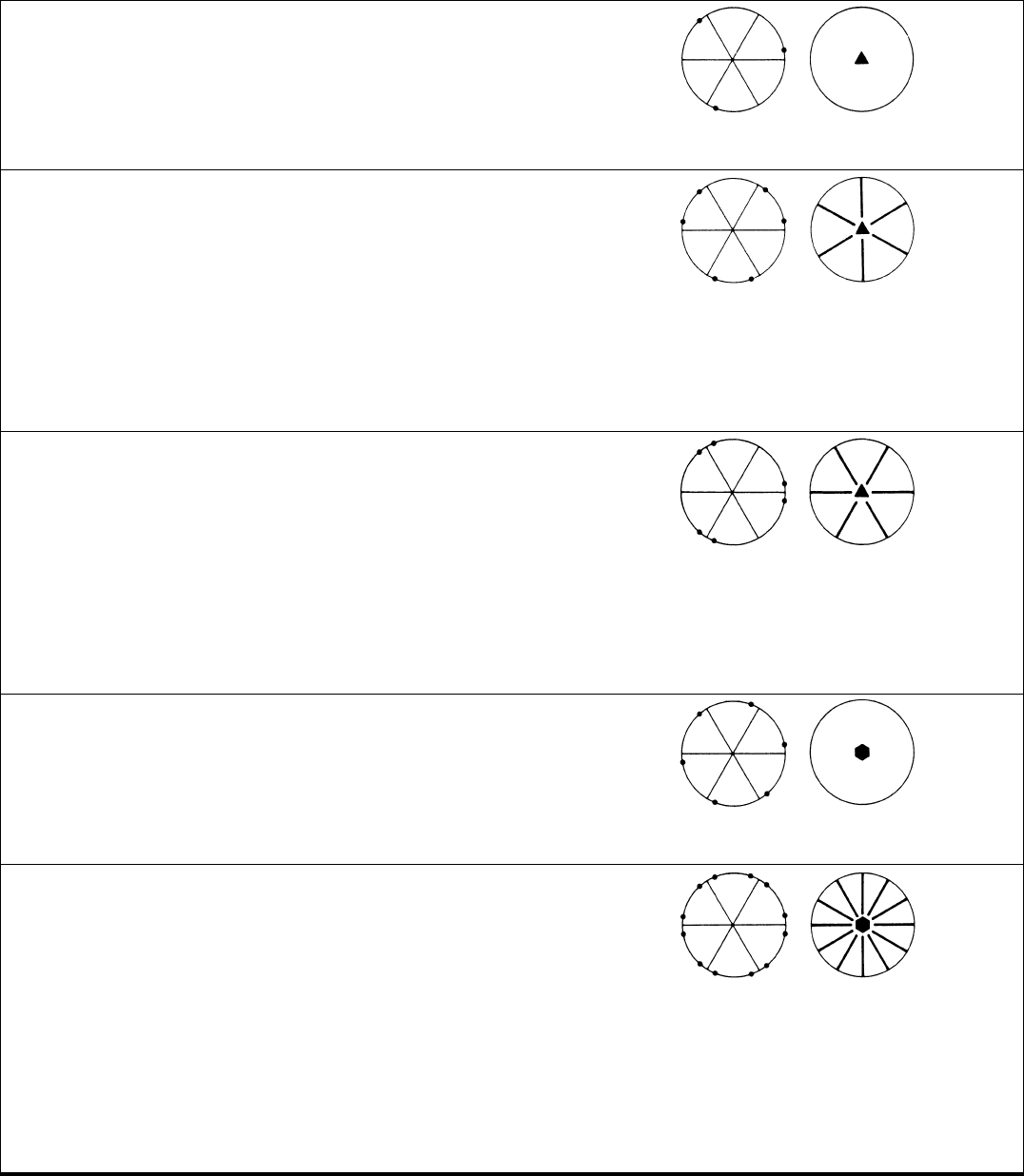
HEXAGONAL SYSTEM
3
3 a 1 Trigon hkiihkkih
Trigon (d)
3m1
6 b 1 Ditrigon hkiihkkih
Truncated trigon (e)
k
h
i
i
k
h
h
i
k
Hexagon
11
2
2111
21
Hexagon
1
122
1
1
12
1
3 a.m.Trigon
10
1
1100
11
Trigon (d)
or
1011
1001
1
31m
6 b 1 Ditrigon hkiihkkih
Truncated trigon (d)
khiikhhik
Hexagon
10
1
1100
11
Hexagon
01
1
1011
10
3 a ..m Trigon
11
2
2111
21
Trigon (c)or
1
122
1
1
12
1
6
6 a 1 Hexagon hkiihkkih
Hexagon (d)
h
k
i
i
h
k
k
i
h
6mm
12 c 1 Dihexagon hkiihkkih
Truncated hexagon ( f )
h
k
i
i
h
k
k
i
h
k
h
i
i
k
h
h
i
k
khiikhhik
6 b.m.Hexagon
10
1
1100
11
Hexagon (e)
1011
1001
1
6 a ..m Hexagon
11
2
2111
21
Hexagon (d)
1
122
1
1
12
1
Table 10.1.2.1. The ten two-dimensional crystallographic point groups (cont.)
769
10.1. CRYSTALLOGRAPHIC AND NONCRYSTALLOGRAPHIC POINT GROUPS
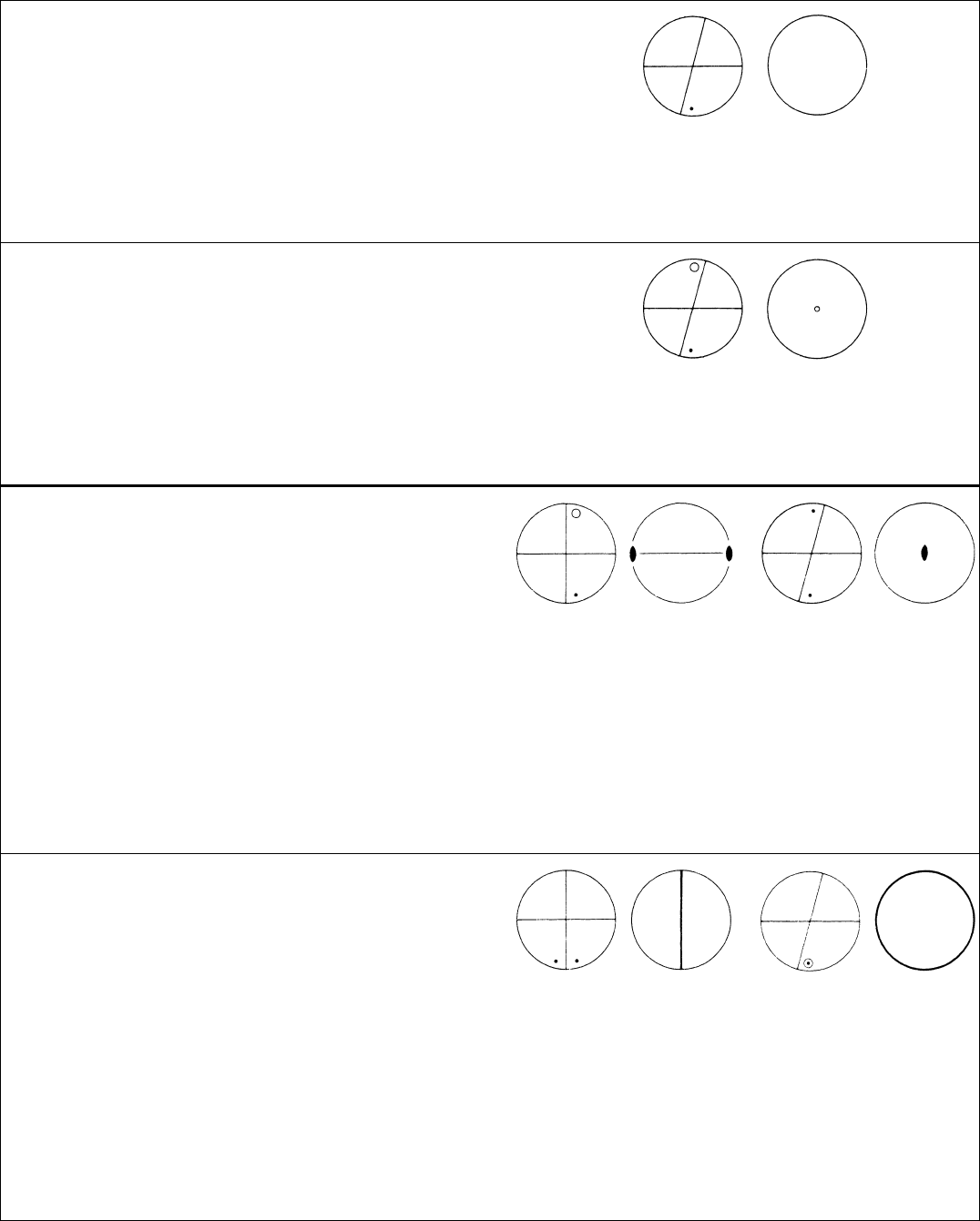
Table 10.1.2.2. The 32 three-dimensional crystallographic point groups
General, special and limiting face forms and point forms (italics), oriented face and site symmetries, and Miller indices (hkl) of equivalent faces [for trigonal and
hexagonal groups Bravais–Miller indices (hkil) are used if referred to hexagonal axes]; for point coordinates see text.
TRICLINIC SYSTEM
1 C
1
1 a 1 Pedion or monohedron (hkl)
Single point (a)
Symmetry of special projections
Along any direction
1
1 C
i
2 a 1 Pinacoid or parallelohedron
hkl
h
k
l
Line segment through origin (i)
Symmetry of special projections
Along any direction
2
MONOCLINIC SYSTEM
2 C
2
Unique axis b Unique axis c
2 b 1 Sphenoid or dihedron
hkl
hk
lhkl
h
kl
Line segment (e)
Pinacoid or parallelohedron
h0l
h0
lhk0
h
k0
Line segment through origin
1 a 2 Pedion or monohedron 010 or 0
10001 or 00
1
Single point (a)
Symmetry of special projections
Along [100] Along [010] Along [001]
Unique axis bm 2 m
cm m 2
mC
s
Unique axis b Unique axis c
2 b 1 Dome or dihedron
hklh
klhklhk
l
Line segment (c)
Pinacoid or parallelohedron
0100
1000100
1
Line segment through origin
1 amPedion or monohedron (h0l)(hk0)
Single point (a)
Symmetry of special projections
Along [100] Along [010] Along [001]
Unique axis bm 1 m
cmm 1
770
10. POINT GROUPS AND CRYSTAL CLASSES
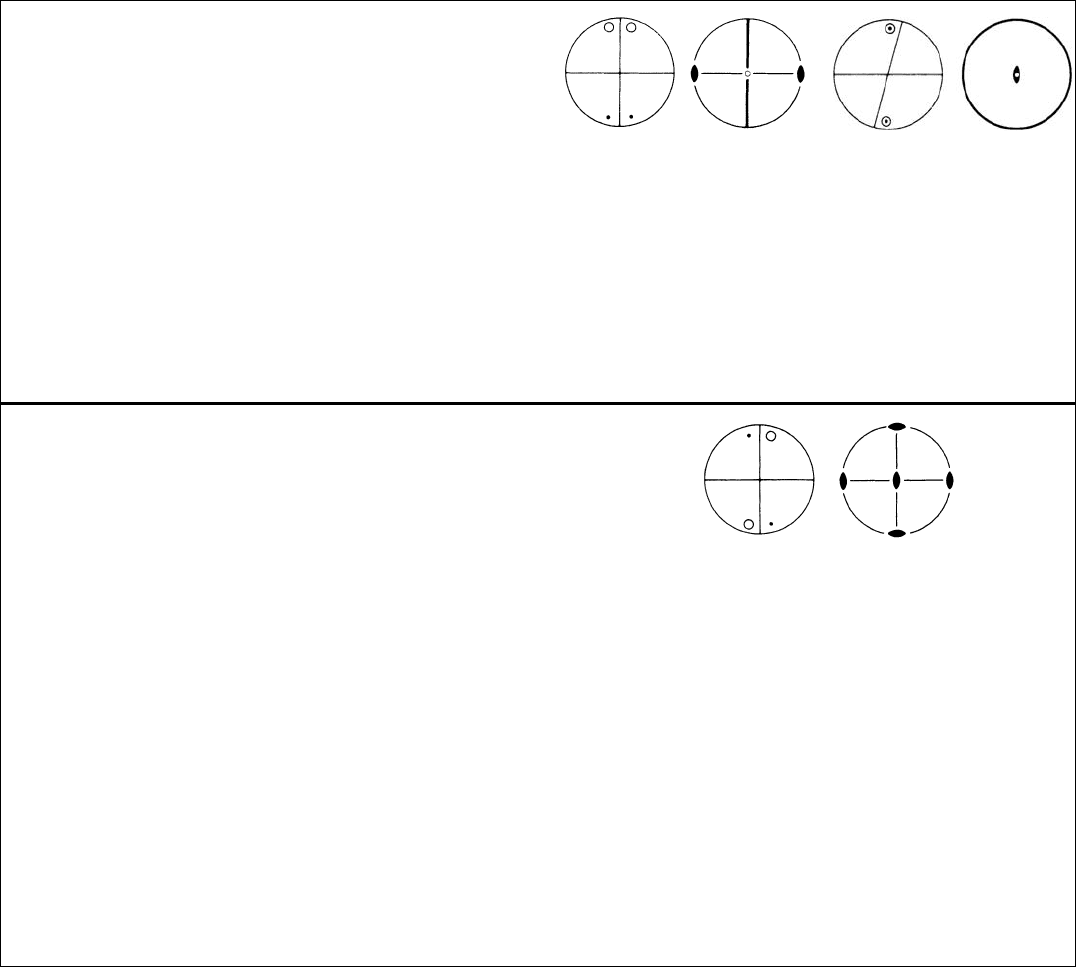
2=mC
2h
Unique axis b Unique axis c
4 c 1 Rhombic prism
hkl
hk
l
h
k
lh
klhkl
h
kl
h
k
lhk
l
Rectangle through origin (o)
2 bmPinacoid or parallelohedron
h0l
h0
lhk0
h
k0
Line segment through origin (m)
2 a 2 Pinacoid or parallelohedron
0100
1000100
1
Line segment through origin (i)
Symmetry of special projections
Along 100 Along
010 Along 001
Unique axis b 2mm 22mm
c 2mm 2mm 2
ORTHORHOMBIC SYSTEM
222 D
2
4 d 1 Rhombic disphenoid or rhombic tetrahedron
hkl
h
kl
hk
l h
k
l
Rhombic tetrahedron (u)
Rhombic prism
hk0
h
k0
hk0h
k0
Rectangle through origin
Rhombic prism
h0l
h0l
h0
l h0
l
Rectangle through origin
Rhombic prism
0kl0
kl0k
l 0
k
l
Rectangle through origin
2 c ..2 Pinacoid or parallelohedron
00100
1
Line segment through origin (q)
2 b .2. Pinacoid or parallelohedron
0100
10
Line segment through origin (m)
2 a 2.. Pinacoid or parallelohedron
100
100
Line segment through origin (i)
Symmetry of special projections
Along 100 Along 010 Along 001
2mm 2mm 2mm
Table 10.1.2.2. The 32 three-dimensional crystallographic point groups ( cont.)
MONOCLINIC SYSTEM (cont.)
771
10.1. CRYSTALLOGRAPHIC AND NONCRYSTALLOGRAPHIC POINT GROUPS
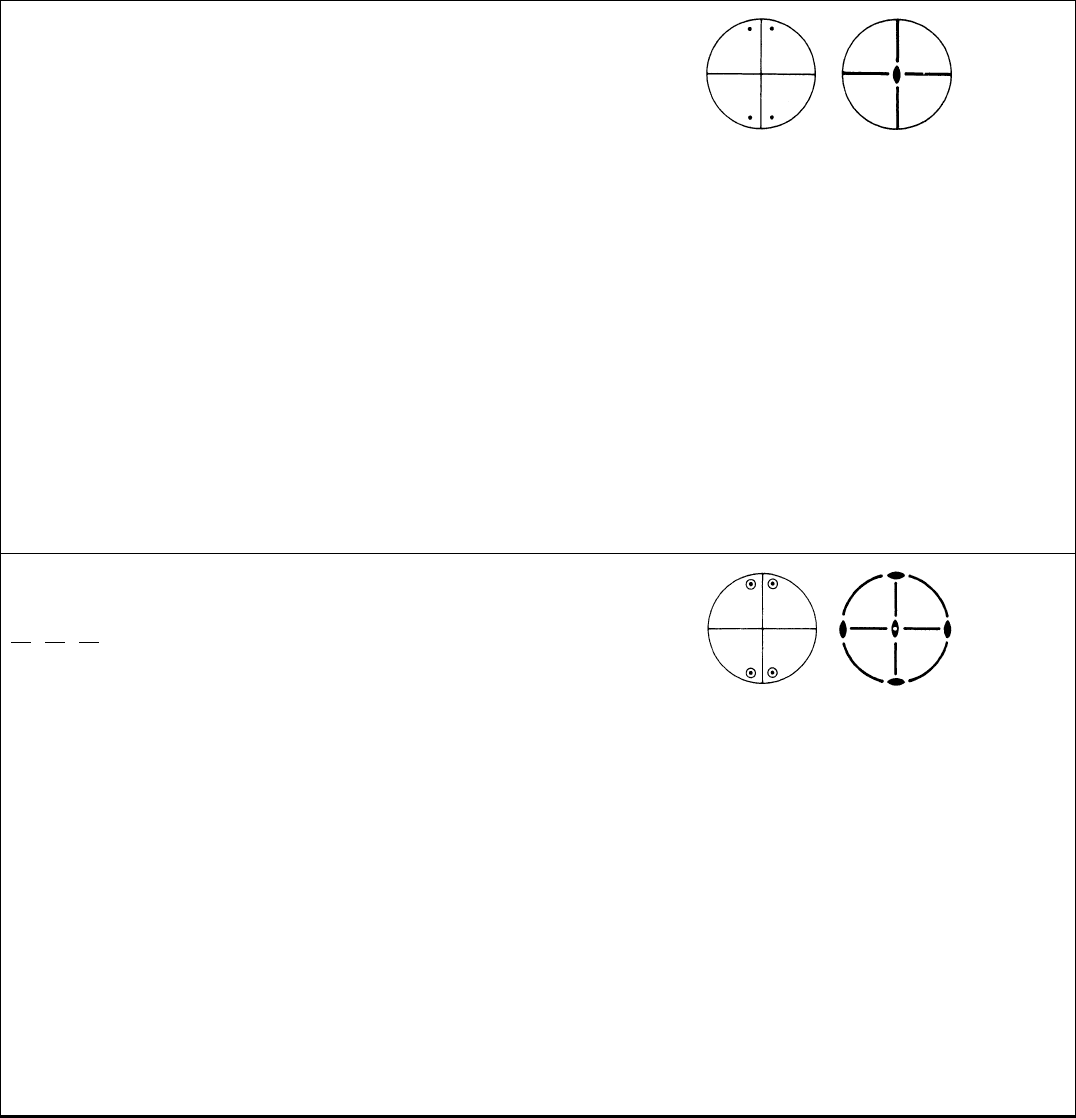
mm2 C
2v
4 d 1 Rhombic pyramid
hkl
h
klh
kl
hkl
Rectangle (i)
Rhombic prism
hk0
h
k0h
k0
hk0
Rectangle through origin
2 cm..Dome or dihedron
0kl0
kl
Line segment (g)
Pinacoid or parallelohedron
0100
10
Line segment through origin
2 b.m.Dome or dihedron
h0l
h0l
Line segment (e)
Pinacoid or parallelohedron
100
100
Line segment through origin
1 amm2 Pedion or monohedron 001 or 00
1
Single point (a)
Symmetry of special projections
Along 100 Along 010 Along 001
mm2mm
mmm
2
m
2
m
2
m
D
2h
8 g 1 Rhombic dipyramid
hkl
h
kl
hk
l h
k
l
Quad ()
h
k
lhk
lh
kl
hkl
4 f ..m Rhombic prism
hk0
h
k0
hk0h
k0
Rectangle through origin (y)
4 e.m.Rhombic prism
h0l
h0l
h0
l h0
l
Rectangle through origin (w)
4 dm..
Rhombic prism
0kl0
kl0k
l 0
k
l
Rectangle through origin (u)
2 cmm2 Pinacoid or parallelohedron
00100
1
Line segment through origin (q)
2 bm2m Pinacoid or parallelohedron
0100
10
Line segment through origin (m)
2 a 2mm Pinacoid or parallelohedron
100
100
Line segment through origin (i)
Symmetry of special projections
Along 100 Along 010 Along 001
2mm 2mm 2mm
Table 10.1.2.2. The 32 three-dimensional crystallographic point groups ( cont.)
ORTHORHOMBIC SYSTEM (cont.)
772
10. POINT GROUPS AND CRYSTAL CLASSES
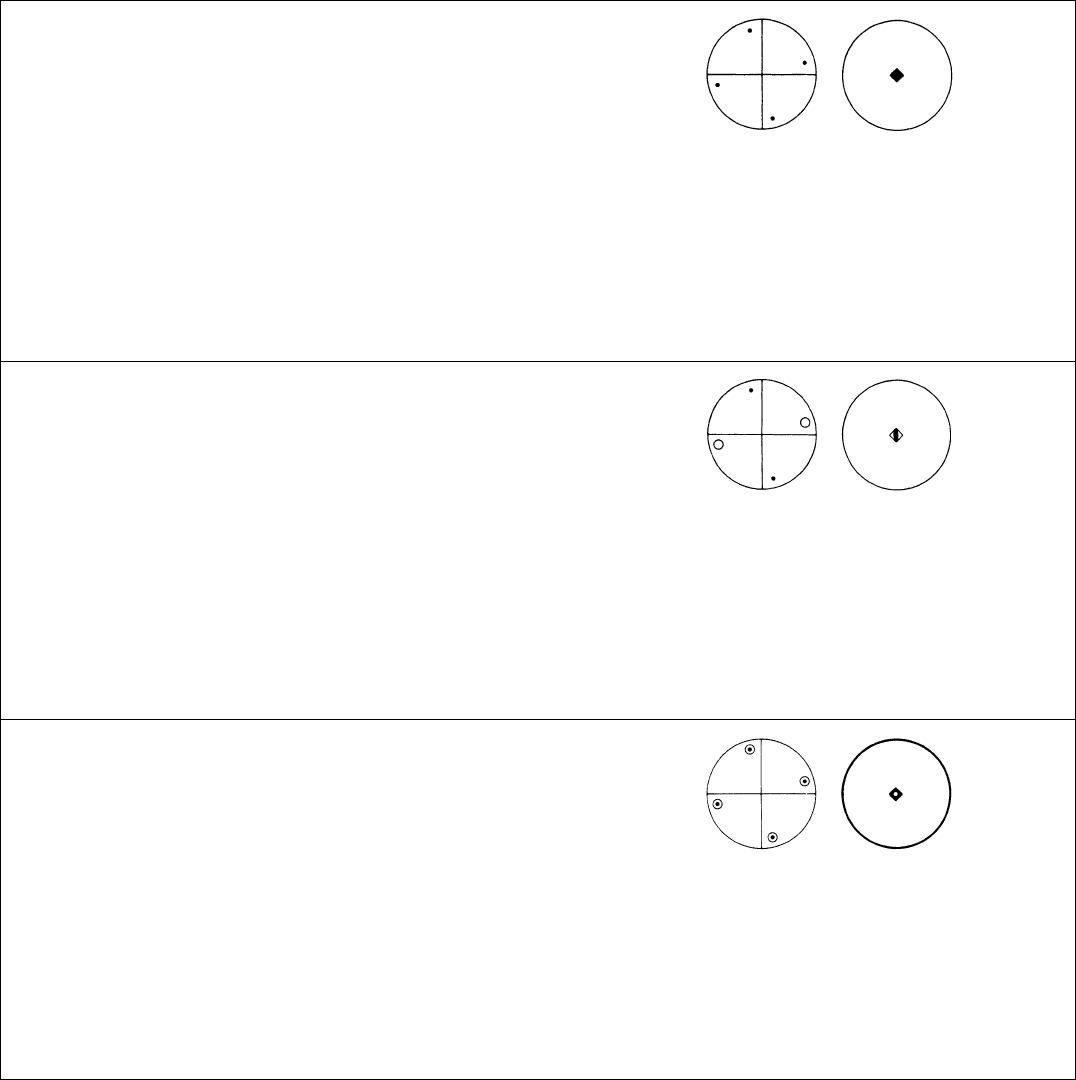
TETRAGONAL SYSTEM
4 C
4
4 b 1 Tetragonal pyramid
hkl
h
kl
khlk
hl
Square (d)
Tetragonal prism
hk0
h
k0
kh0k
h0
Square through origin
1 a 4.. Pedion or monohedron 001 or 00
1
Single point (a)
Symmetry of special projections
Along 001 Along 100 Along 110
4 mm
4 S
4
4 b 1 Tetragonal disphenoid or tetragonal tetrahedron
hkl
h
klk
h
l
kh
l
Tetragonal tetrahedron (h)
Tetragonal prism
hk0
h
k0k
h0
kh0
Square through origin
2 a 2.. Pinacoid or parallelohedron
00100
1
Line segment through origin (e)
Symmetry of special projections
Along 001 Along 100 Along 110
4 mm
4=mC
4h
8 c 1 Tetragonal dipyramid
hkl
h
kl
khlk
hl
Tetragonal prism (l)
h
k
lhk
lk
h
l
kh
l
4 bm..Tetragonal prism
hk0
h
k0
kh0k
h0
Square through origin (j)
2 a 4.. Pinacoid or parallelohedron
00100
1
Line segment through origin (g)
Symmetry of special projections
Along 001 Along 100 Along 110
42mm 2
mm
Table 10.1.2.2. The 32 three-dimensional crystallographic point groups ( cont.)
773
10.1. CRYSTALLOGRAPHIC AND NONCRYSTALLOGRAPHIC POINT GROUPS
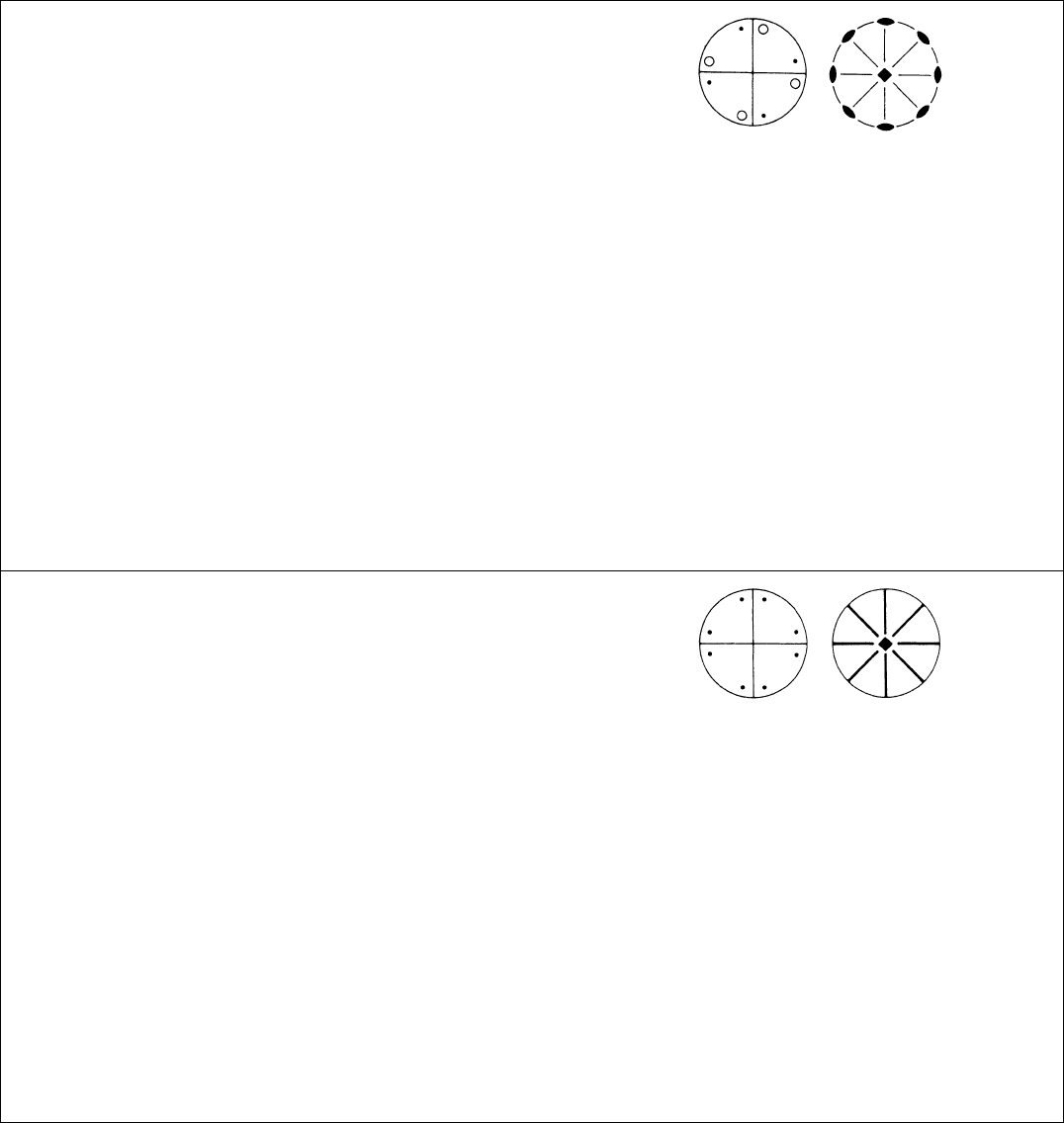
422 D
4
8 d 1 Tetragonal trapezohedron
hkl
h
kl
khlk
hl
Twisted tetragonal antiprism (p)
hk
lh
k
lkh
l
k
h
l
Ditetragonal prism
hk0
h
k0
kh0k
h0
Truncated square through origin
hk0h
k0kh0
k
h0
Tetragonal dipyramid
h0l
h0l0hl0
hl
Tetragonal prism
h0
l h0
l 0h
l0
h
l
Tetragonal dipyramid
hhl
h
hl
hhlh
hl
Tetragonal prism
hh
l h
h
l hh
l
h
h
l
4 c .2. Tetragonal prism
100
1000100
10
Square through origin (l)
4 b ..2 Tetragonal prism
110
1
10
1101
10
Square through origin ( j )
2 a 4.. Pinacoid or parallelohedron
00100
1
Line segment through origin (g)
Symmetry of special projections
Along 001 Along 100 Along 110
4mm 2mm 2mm
4mm C
4v
8 d 1 Ditetragonal pyramid
hkl
h
kl
khlk
hl
Truncated square (g )
h
kl
hkl
k
hlkhl
Ditetragonal prism
hk0
h
k0
kh0k
h0
Truncated square through origin
h
k0
hk0
k
h0kh0
4 c.m.Tetragonal pyramid
h0l
h0l0hl0
hl
Square (e)
Tetragonal prism
100
1000100
10
Square through origin
4 b ..m Tetragonal pyramid
hhl
h
hl
hhlh
hl
Square (d)
Tetragonal prism
110
1
10
1101
10
Square through origin
1 a 4mm Pedion or monohedron 001 or 00
1
Single point (a)
Symmetry of special projections
Along 001 Along 100 Along 110
4mm m m
Table 10.1.2.2. The 32 three-dimensional crystallographic point groups ( cont.)
TETRAGONAL SYSTEM (cont.)
774
10. POINT GROUPS AND CRYSTAL CLASSES
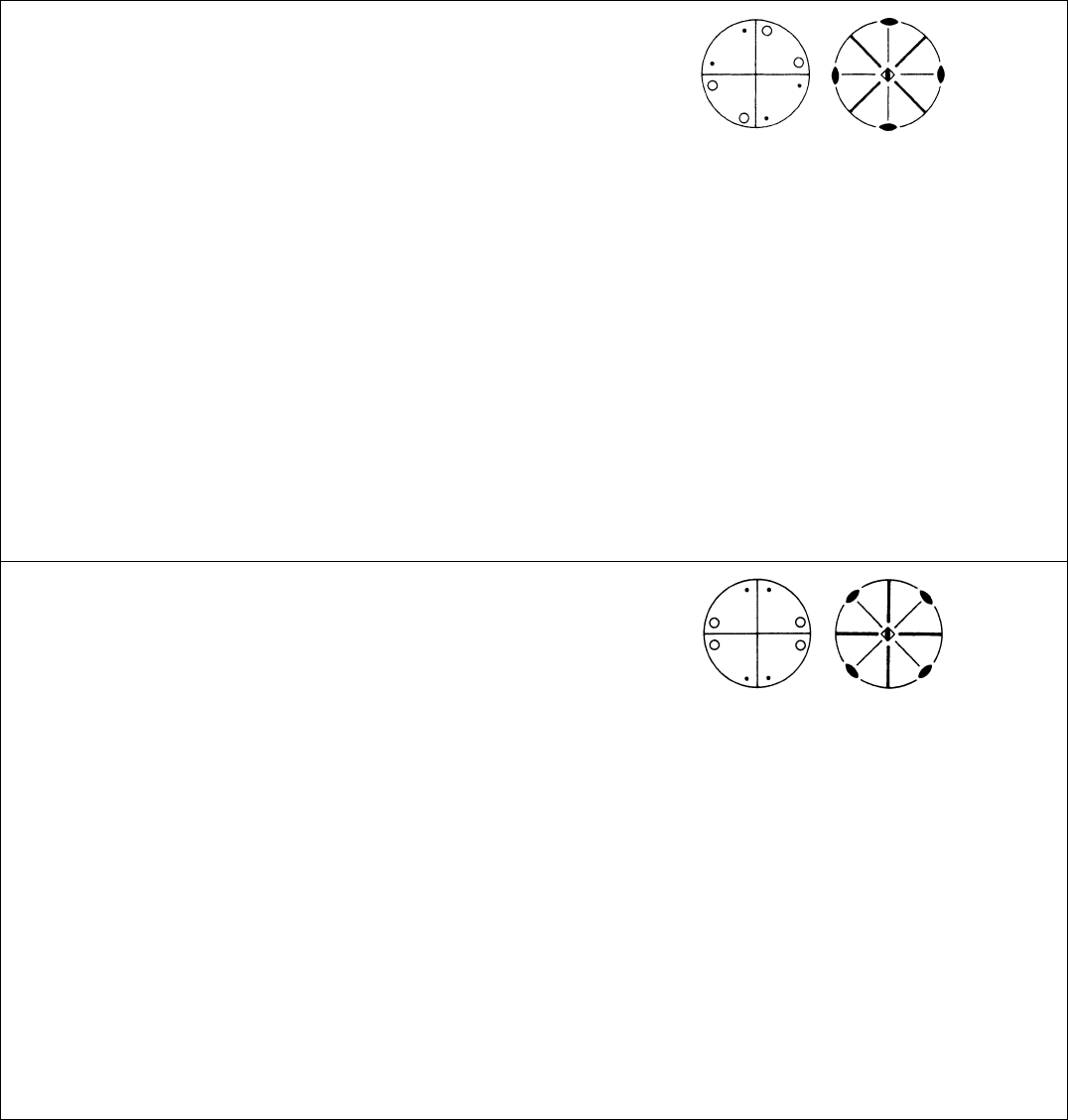
42mD
2d
8 d 1 Tetragonal scalenohedron
hkl
h
klk
h
l
kh
l
Tetragonal tetrahedron cut off by pinacoid (o)
hk
lh
k
l
k
hlkhl
Ditetragonal prism
hk0
h
k0k
h0
kh0
Truncated square through origin
hk0h
k0
k
h0kh0
Tetragonal dipyramid
h0l
h0l0
h
l
0h
l
Tetragonal prism
h0
lh0
l0
hl0hl
4 c ..m Tetragonal disphenoid or tetragonal tetrahedron
hhl
h
hlh
h
l
hh
l
Tetragonal tetrahedron (n)
Tetragonal prism
110
1
101
10
110
Square through origin
4 b .2. Tetragonal prism
100
1000
10010
Square through origin (i)
2 a 2.mm Pinacoid or parallelohedron
00100
1
Line segment through origin
(g)
Symmetry of special projections
Along 001 Along 100 Along 110
4mm 2mm m
4m2 D
2d
8 d 1 Tetragonal scalenohedron
hkl
h
klk
h
l
kh
l
Tetragonal tetrahedron cut off by pinacoid (l)
h
kl
hkl kh
l
k
h
l
Ditetragonal prism
hk0
h
k0k
h0
kh0
Truncated square through origin
h
k0
hk0kh0
k
h0
Tetragonal dipyramid
hhl
h
hlh
h
l
hh
l
Tetragonal prism
h
hl
hhlhh
l
h
h
l
4 c.m.Tetragonal disphenoid or tetragonal tetrahedron
h0l
h0l0
h
l0h
l
Tetragonal tetrahedron ( j )
Tetragonal prism
100
1000
10010
Square through origin
4 b ..2 Tetragonal prism
110
1
101
10
110
Square through origin (h)
2 a 2 mm. Pinacoid or parallelohedron
00100
1
Line segment through origin
(e)
Symmetry of special projections
Along 001 Along 100 Along 110
4mm m 2mm
Table 10.1.2.2. The 32 three-dimensional crystallographic point groups ( cont.)
TETRAGONAL SYSTEM (cont.)
775
10.1. CRYSTALLOGRAPHIC AND NONCRYSTALLOGRAPHIC POINT GROUPS
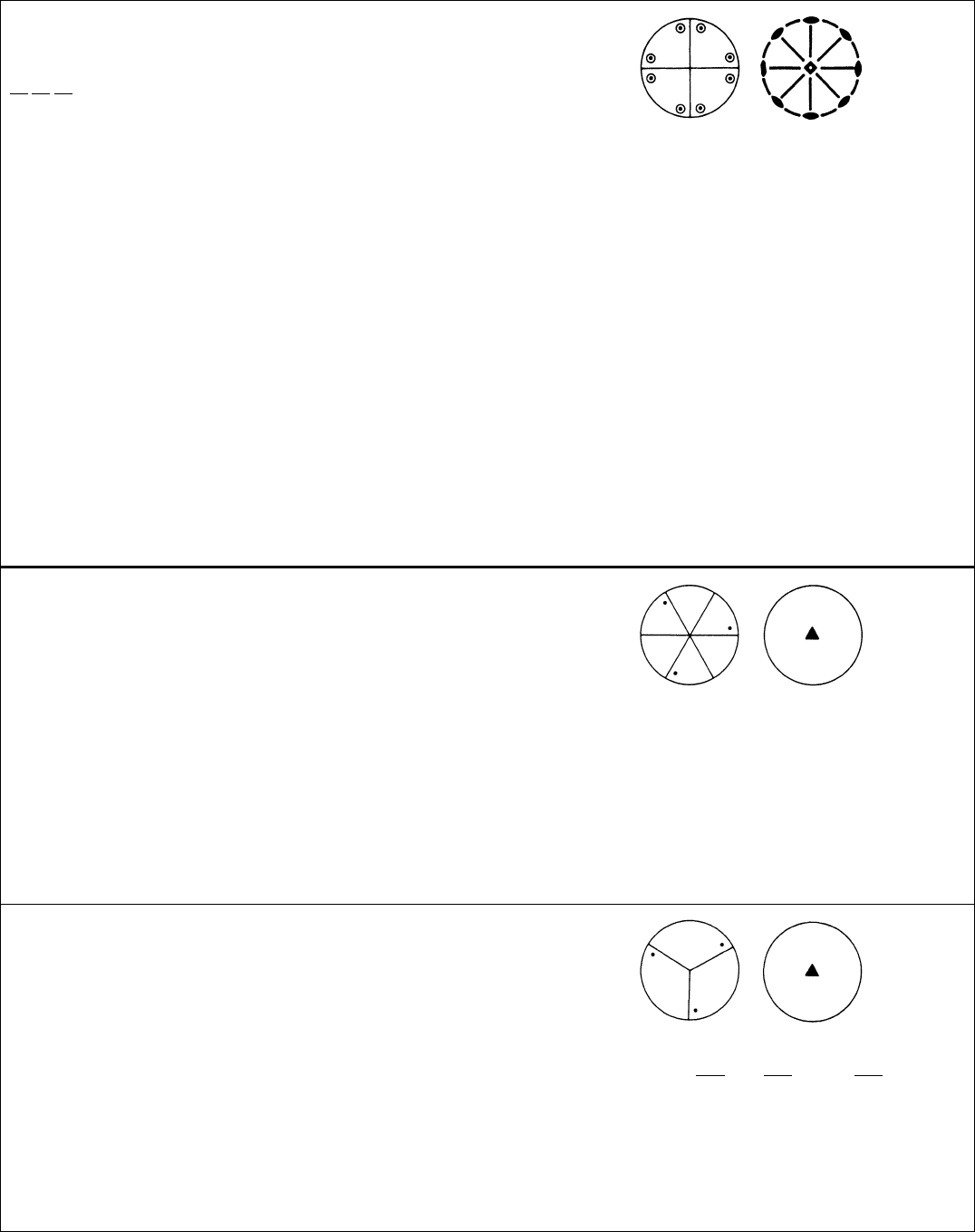
4=mmm
4
m
2
m
2
m
D
4h
16 g 1 Ditetragonal dipyramid
hkl
h
kl
khlk
hl
Edge-truncated tetragonal prism (u)
hk
lh
k
lkh
l
k
h
l
h
k
lhk
lk
h
l
kh
l
h
kl
hkl
k
hlkhl
8 f.m.Tetragonal dipyramid
h0l
h0l0hl0
hl
Tetragonal prism (s)
h0
lh0
l0h
l0
h
l
8 e ..m Tetragonal dipyramid
hhl
h
hl
hhlh
hl
Tetragonal prism (r)
hh
lh
h
lhh
l
h
h
l
8 dm..Ditetragonal prism
hk0
h
k0
kh0k
h0
Truncated square through origin (p)
hk0h
k0kh0
k
h0
4 cm2 m. Tetragonal prism
100
1000100
10
Square through origin (l)
4 bm.m2 Tetragonal prism
110
1
10
1101
10
Square through origin ( j )
2 a 4 mm Pinacoid or parallelohedron
00100
1
Line segment through origin (g)
Symmetry of special projections
Along 001 Along 100 Along 110
4mm 2mm 2mm
TRIGONAL SYSTEM
3 C
3
HEXAGONAL AXES
3 b 1 Trigonal pyramid hkilihklkihl
Trigon (d)
Trigonal prism hki0ihk0kih0
Trigon through origin
1 a 3.. Pedion or monohedron 0001 or 000
1
Single point (a)
Symmetry of special projections
Along 001 Along 100 Along 210
311
3 C
3
RHOMBOHEDRAL AXES
3 b 1 Trigonal pyramid hkllhkklh
Trigon (b)
Trigonal prism
hk
hk hkhkkhkh
Trigon through origin
1 a 3. Pedion or monohedron 111 or
1
1
1
Single point (a)
Symmetry of special projections
Along 111 Along 1
10 Along 2
1
1
311
Table 10.1.2.2. The 32 three-dimensional crystallographic point groups ( cont.)
TETRAGONAL SYSTEM (cont.)
776
10. POINT GROUPS AND CRYSTAL CLASSES
